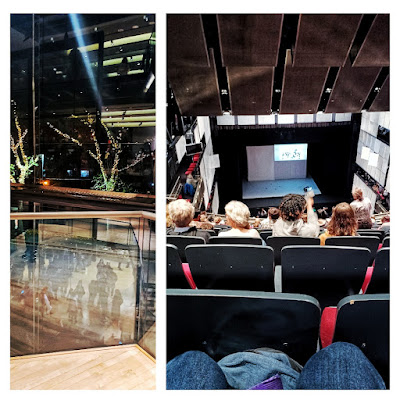Visiting the Real Alcázar de Sevilla 🇪🇸 - Writing Wednesday
Hello everybody and welcome back to another blog post,
As I mentioned in my previous blog post, last week on Thursday, me and my parents travelled to Seville, Spain for our week-long holiday break away from the UK. My older sister Alice went to Prague in the Czech Republic with her boyfriend, Tom, during this time, so it was only me on the plane with my parents for this holiday. It was a hectic journey getting to Seville, as I'm sure you've all probably read already in my previous blog post and in a way, we almost didn't make it to Spain at all, but I'm so glad that luck was on our side because what a beautiful city it is and what an absolute shame it would have been to have missed it all!
Seville is a 2,200 year old Spanish city located by the Guadalquivir River in the southwest part of the Iberian Peninsula. This ancient city obviously has a rich history as it was occupied by many groups of people throughout it's lifetime: the Phoenecians and the Tartessians (the native Iberian people pre-Roman occupation), the Romans, the Arabs, and the Christians, to name but a few significant groups of people. The conflict between Islam and Christianity, brought in by the Christian and Islamic conquests of Seville, is what's particularly prevalent in the architecture of the city today. On the one hand, you pass a back street and come across these beautiful ornate churches and cathedrals like the Catedral de Sevilla, and the city seems to be very Catholic. But on the other hand, you come across places such as the Real Alcázar de Sevilla, and the geometry that is showcased in the artwork seems to scream everything that is related to Islam. The Real Alcázar is one of the first important monuments that we visited on our trip and what a beautiful site it was!
The Real Alcázar de Sevilla is a royal palace located in Seville, which was built originally for the Christian king Peter of Castile. The palace was built on the site of a residential fortress that was created after Seville was conquered the Umayyad Caliphate in the year 712. However, the fortress was destroyed by the Castilian Christians after the Christian conquest of Seville in 1248 but the palace retained its Arabian style.
When I entered this ancient palace, I was simply blown away by the architecture. There were loads of intricate patterns that were etched into the stonework; I was simply amazed at how all this was created by the individual hands of people who had limited tools in their masonry at the time. When I looked at the carved walls in more detail, I also noticed bits of green and blue paint that had slowly degraded on the wall over time. My dad then said to me, "Juliette, imagine what this carved wall would have looked like when it was all painted perfectly." He was right, it would have most certainly been spectacular.
The tiled walls were also a sight to behold. People don't often think that religion and mathematics can go hand in hand. However, because the Arabs were so limited with their designs because outlining living beings in artwork was not permitted under the religion of Islam, they were forced to create innovative patterns that no one had ever seen before. I remember learning about tessellations in maths at secondary school. These are very intricate patterns created by shapes that have the ability to repeat themselves again and again. I didn't think much of this geometric principle at the time I was learning about it in school but now I realise, having set foot into this palace, that it was these Islamic works of art that inspired it all.
Everything about the Real Alcázar de Sevilla was photogenic. Archways also made up a lot of the palace's main architecture. As you walked from one room to the other, you could see a series of archways laid out in front of you. It was as if they were placed in such a way that the archways in front were framed by the ones in the back; as if they were almost reflected by each other. As I walked around the site, I felt the need to take a photo of every archway that I saw but I had to remind myself that it was a place mainly to be absorbed by my own eyes, not the lense of a camera.
The whole palace was very grand and regal, a reflection of the Christian royal family that still resides there today. Everything was a work of art. When we visited the palace gardens, we were also blown away by the plethora of botany that was exhibited on the site and how everything was presented. By this point, we were nearing the end of our visit and we were starting to feel as though we could not absorb anymore. This made me realise just how synthetic modern architecture really is. Everything nowadays can be so easily made and so easily reproduced that it's almost as if the style has suffered as a result. However, because everything took so much time to create in the Real Alcázar de Sevilla, it certainly seemed a lot more beautiful than anything that is created today.
What an experience it was...
Have you ever been to Spain? Let me know in the comments below and I'll be sure to reply to them. I ♡ hearing from you!























Comments
Post a Comment
Thanks for leaving your comments! I really enjoy reading your positive and constructive messages. They really make my day! 💜